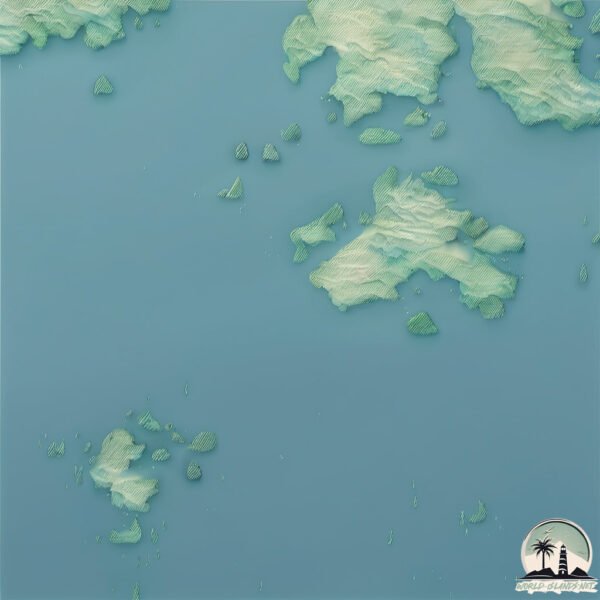Welcome to Hoenggan-do , a Temperate island in the Japan Sea, part of the majestic Pacific Ocean. This guide offers a comprehensive overview of what makes Hoenggan-do unique – from its geography and climate to its population, infrastructure, and beyond. Dive into the details:
Geography and size of Hoenggan-do
Size: 3.635 km²Coastline: 12.5 kmOcean: Pacific OceanSea: Japan SeaContinent: Asia
Hoenggan-do is a Small Island spanning 3.6 km² with a coastline of 12.5 km.
Archipel: –
Tectonic Plate: Amur – A minor tectonic plate in the region of the Amur River at the border of Russia and China, involved in complex interactions with the Pacific and Eurasian plates.
The geographic heart of the island is pinpointed at these coordinates:
Climate and weather of Hoenggan-do
Climate Zone: TemperateClimate Details: Humid Subtropical ClimateTemperature: Hot Summer
Climate Characteristics: With continuous rainfall and hot summers, this climate is common in some coastal regions, supporting diverse vegetation.
Topography and nature of Hoenggan-do
Timezone: UTC+09:00Timezone places: Asia/TokyoMax. Elevation: 63 m Mean Elevation: 42 mVegetation: Mixed ForestTree Coverage: 66%
The mean elevation is 42 m. The highest elevation on the island reaches approximately 63 meters above sea level. The island is characterized by Plains: Flat, low-lying lands characterized by a maximum elevation of up to 200 meters. On islands, plains are typically coastal lowlands or central flat areas.
Dominating Vegetation: Mixed Forest
Vegetation: 8 vegetation zones – Very Highly Diverse Island
Infrastructure and Travelling to Hoenggan-do
Does the island have a public airport? no .
Does the island have a major port? no .
The mean population of Hoenggan-do is 82 per km². Hoenggan-do is Gently Populated. The island belongs to South Korea .
Continuing your journey, Nohwa-do is the next notable island, situated merely km away.
제주도 추자도 전설 1부 #추자도 #제주도여행 #섬전설 #재밌는이야기 #추자도여행 #추자도전설 #섬여행 #shorts
제주도 추자도 전설 전체 내용 #추자도 #제주도여행 #섬전설 #재밌는이야기 #추자도여행 #추자도전설 #섬여행
추자도에 내려오는 전설 이야기 입니다. 재미있네요 열심히 살라는 말 이겠죠.
추자도에 내려오는 전설 이야기 입니다. 재미있네요 열심히 살라는 말 이겠죠.
제주도에서 떠나는 추자도여행, 상추자도, 하추자도 올레길 걷기, 낚시 견문록♡삶1042/Jeju Chujado, korea
제주항에서 퀸스타2호를 타고 1시간 10분이면 추자도 상추자도에 있는 추자항에 도착합니다. 추자도는 낚시로 유명하고 청정지역 ...
제주항에서 퀸스타2호를 타고 1시간 10분이면 추자도 상추자도에 있는 추자항에 도착합니다. 추자도는 낚시로 유명하고 청정지역 ...
South Korea is classified as Emerging region: MIKT: Mexico, Indonesia, South Korea, and Turkey – Economies recognized for their development potential and emerging market status. The level of income is High income: OECD.
News – Latest Updates and Headlines from Hoenggan-do
Stay informed with the most recent news and important headlines from Hoenggan-do. Here’s a roundup of the latest developments.
Loading...
Please note: The data used here has been primarily extracted from satellite readings. Deviations from exact values may occur, particularly regarding the height of elevations and population density. Land area and coastline measurements refer to average values at mean high tide.

